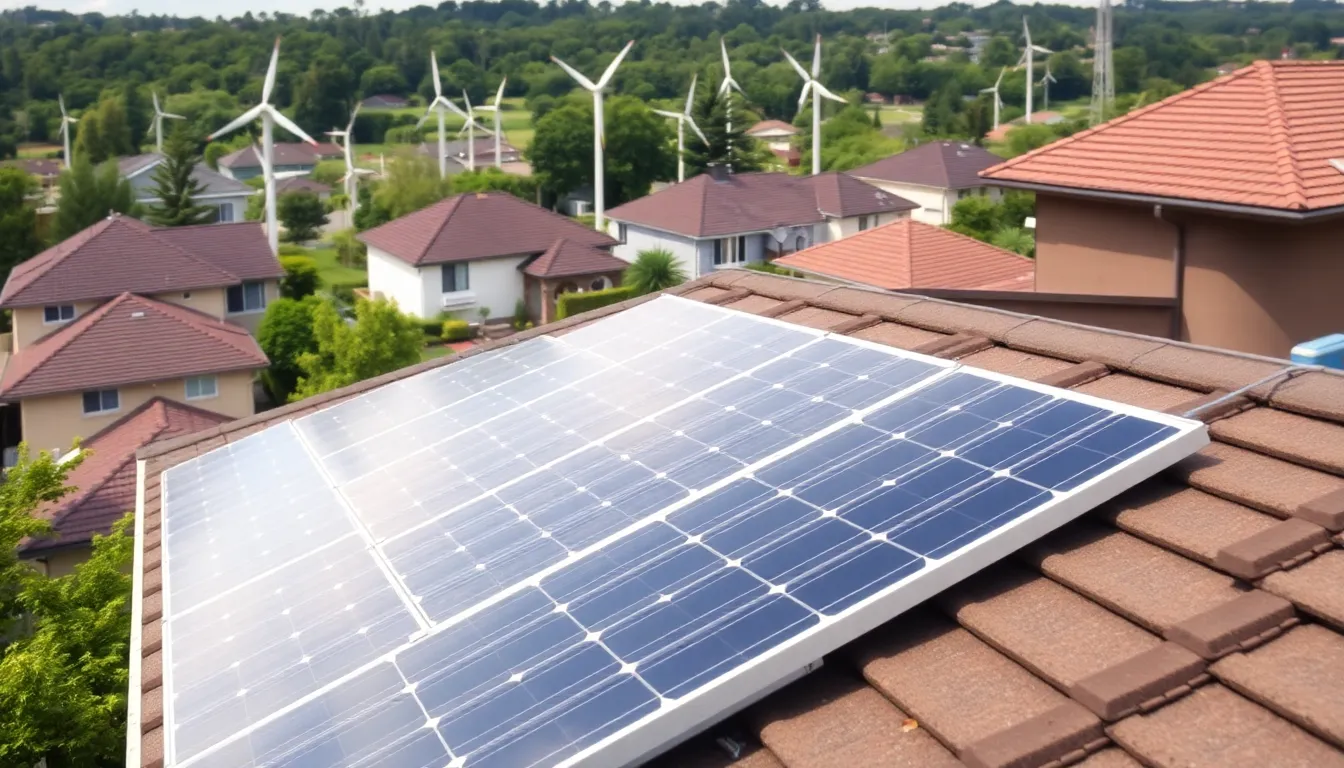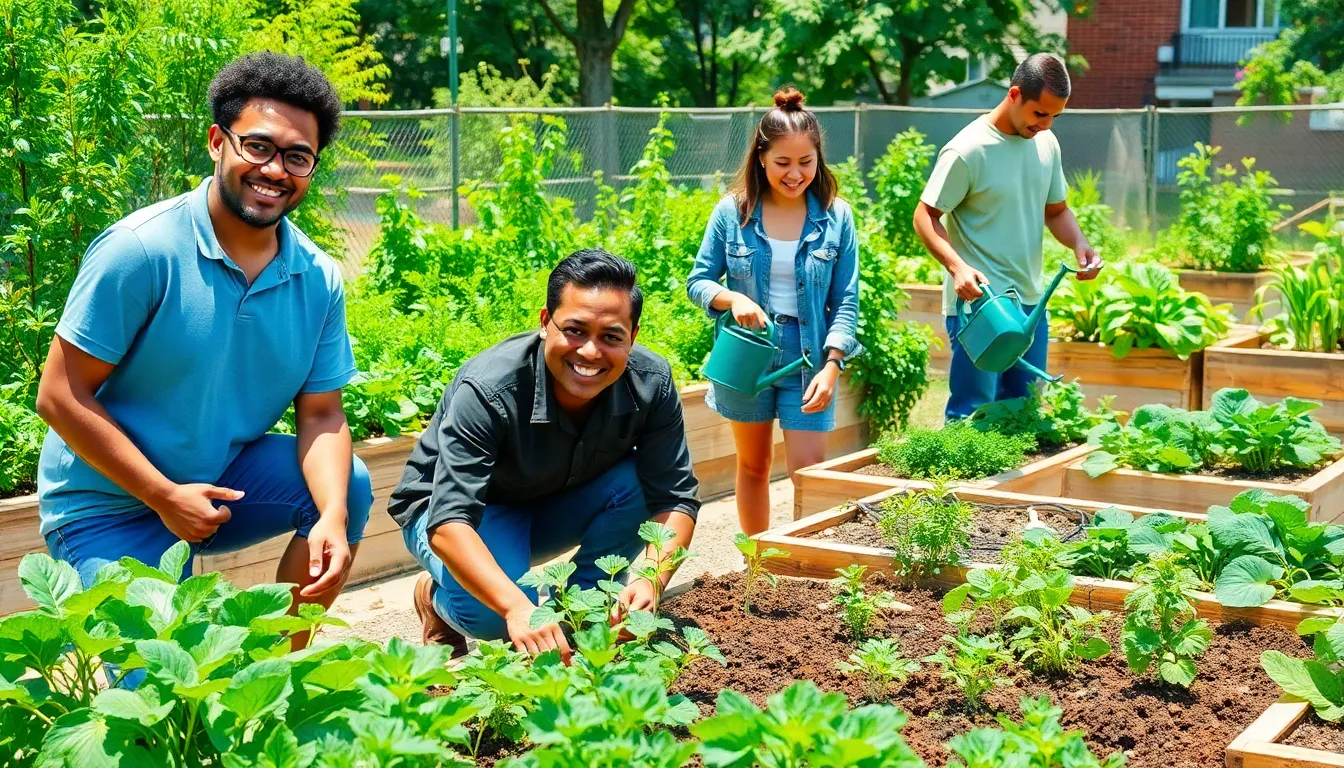In a world where plastic straws seem to multiply like rabbits, sustainable living innovations are stepping in to save the day. Imagine a future where your morning coffee doesn’t come with a side of guilt, and your home runs on sunshine. It’s not just a dream; it’s happening right now!
Sustainable Living Innovations
Sustainable living innovations address pressing environmental challenges by promoting eco-friendly habits. Companies develop alternatives to single-use plastics, such as biodegradable materials and reusable products. Innovations in technology also contribute significantly, with solar panels gaining popularity for residential energy needs.
Smart home devices enhance energy efficiency, allowing homeowners to monitor and adjust their energy consumption easily. Electric vehicles increasingly replace traditional gasoline-powered cars, reducing greenhouse gas emissions. This shift in transportation is complemented by advancements in public transit systems, which focus on sustainability.
Urban farming initiatives offer innovative solutions for food production. Community gardens and vertical farms not only conserve land but also provide fresh produce to urban populations. Water conservation technologies, like rainwater harvesting systems, help reduce reliance on municipal water sources.
Education plays a critical role. Programs raise awareness about sustainable practices, encouraging individuals to adopt greener lifestyles. Collaborative efforts among local governments and organizations support these initiatives, fostering a culture of sustainability within communities.
Research and development in renewable energy sources focus on improving efficiency and accessibility. Wind turbines and geothermal systems contribute to a sustainable energy landscape while decreasing dependency on fossil fuels. The ongoing commitment to these innovations reflects a collective willingness to prioritize ecological health and create a cleaner, brighter future.
Types of Sustainable Living Innovations

Sustainable living innovations encompass various solutions that reduce environmental impact. Key areas include renewable energy and eco-friendly products.
Renewable Energy Solutions
Solar panels emerge as a leading solution for residential energy needs, harnessing sunlight for electricity. Wind turbines significantly contribute to energy generation, providing clean power to communities. Geothermal systems use heat from the earth, offering a consistent energy source with minimal emissions. Hydropower captures energy from flowing water, showcasing an efficient way to produce electricity. Battery storage technologies, like lithium-ion batteries, enhance the reliability of renewable energy, ensuring accessible power even during low generation periods. Through these innovations, sustainable energy practices elevate ecological responsibility while decreasing greenhouse gas emissions.
Eco-Friendly Products
Biodegradable materials present a sustainable alternative to traditional plastics, breaking down naturally in the environment. Reusable bags and containers reduce single-use plastic demand, promoting a culture of sustainability. Compostable dinnerware replaces disposable options, providing an eco-conscious choice for events. Plant-based cleaning products offer safe and non-toxic alternatives, protecting both health and the environment. Water bottles made from recycled materials minimize waste while encouraging hydration without plastic pollution. These eco-friendly products reflect a crucial shift in consumer behavior toward more responsible consumption habits.
Benefits of Sustainable Living Innovations
Sustainable living innovations provide numerous advantages, benefiting both the environment and the economy. These advancements create a cleaner, healthier planet while promoting economic growth.
Environmental Impact
Sustainable living innovations significantly reduce pollution levels. Alternatives to single-use plastics decrease plastic waste in landfills and oceans. Renewable energy sources minimize greenhouse gas emissions, combating climate change. Urban farming initiatives enhance local food production, reducing the carbon footprint associated with transportation. Rainwater harvesting systems conserve water, lessening the strain on freshwater sources. Effective waste management practices, such as composting, enrich soil health and promote biodiversity. Education about sustainability fosters awareness, encouraging eco-friendly choices among individuals and communities.
Economic Advantages
Sustainable living innovations stimulate economic growth. Investing in renewable energy creates jobs in manufacturing and installation. Reduced energy costs come from using solar panels and energy-efficient appliances, saving households money over time. Communities benefit from local food systems, as urban farms often source produce directly to consumers, supporting local economies. Electric vehicles, supported by charging infrastructure, attract new industries and increase demand for skilled labor. Innovative start-ups focused on sustainability often receive funding, driving research and development in eco-friendly technologies. Overall, embracing sustainable practices leads to a resilient economy, promoting long-term prosperity.
Challenges in Implementing Innovations
Challenges persist in implementing sustainable living innovations, despite their importance. Key issues often stem from financial barriers and public awareness.
Financial Barriers
High costs frequently impede the adoption of sustainable technologies. For instance, initial investments in solar panels or electric vehicles can deter consumers and small businesses. Some governments offer incentives, but gaps in funding limit access for many. Investment in sustainable innovations often requires upfront capital that not all households possess. Organizations also face challenges securing financing for eco-friendly projects. Without financial backing, the potential for widespread change diminishes significantly.
Public Awareness and Acceptance
Public awareness plays a crucial role in the success of sustainable innovations. Many individuals remain uninformed about the benefits of adopting eco-friendly practices. Misconceptions about the effectiveness or high costs of sustainable alternatives can hinder their acceptance. Educational initiatives serve as vital tools in promoting understanding and acceptance. Community workshops and online campaigns can help bridge the knowledge gap. Additionally, visible successes from early adopters can inspire others to embrace these changes, fostering a culture of innovation.
Future Trends in Sustainable Living Innovations
Emerging technologies shape the future of sustainable living innovations. Innovations in energy storage, particularly advanced battery technologies, support the increased adoption of renewable energy sources. Companies invest in research to enhance battery efficiency, maximizing solar and wind energy use.
Renewable energy systems are also evolving. Smart grids integrate with homes, optimizing energy consumption through real-time data. These grids balance supply and demand effectively, reducing strain on traditional energy sources.
Plant-based materials attract attention as alternatives to plastics. Businesses develop biodegradable packaging solutions, aiming to minimize waste in landfills and oceans. These eco-friendly products contribute to a circular economy, promoting sustainability at every stage of the supply chain.
Urban areas embrace vertical farming. This innovative method maximizes space, allowing cities to produce food locally. It reduces transportation emissions and promotes fresh produce access for urban residents.
Water conservation technologies advance as well. Smart irrigation systems utilize sensors to monitor soil moisture levels, ensuring efficient water use in landscaping. Rainwater harvesting systems become increasingly popular, providing sustainable water sources for homes and public spaces.
Consumer demand for sustainable products drives market growth. Brands pivot towards eco-friendly manufacturing processes, showcasing their commitment to sustainability. Certification programs validate these efforts, increasing consumer trust in green products.
Collaboration between businesses and local governments fosters innovation. Initiatives supporting community-based renewable energy projects emerge, empowering residents to participate in sustainable practices. This collaboration strengthens local economies and inspires community engagement in sustainability efforts.
Conclusion
Sustainable living innovations are paving the way for a healthier planet and a brighter future. As technology continues to evolve, individuals and communities can embrace eco-friendly practices that not only reduce environmental impact but also enhance quality of life. The shift towards renewable energy and sustainable products is not just beneficial; it’s essential for creating resilient economies and vibrant communities.
By fostering awareness and collaboration, society can overcome challenges and adopt these innovations more widely. As consumers demand greener solutions, businesses are encouraged to innovate and prioritize sustainability. This collective effort will ultimately lead to a more sustainable world where future generations can thrive.




